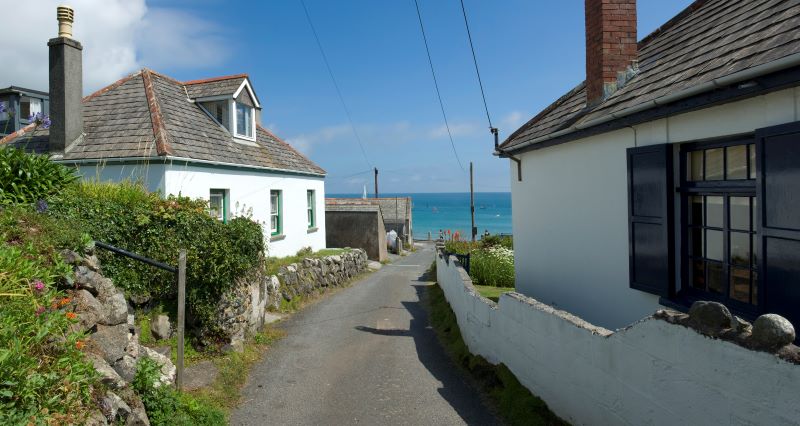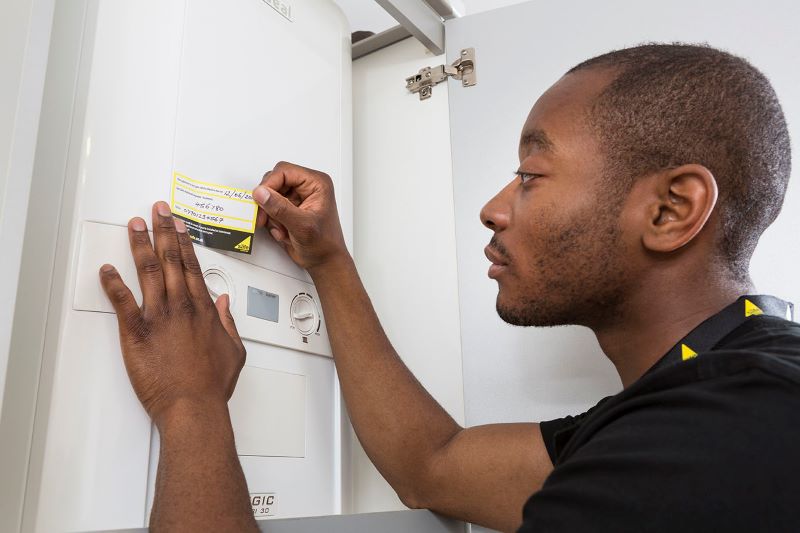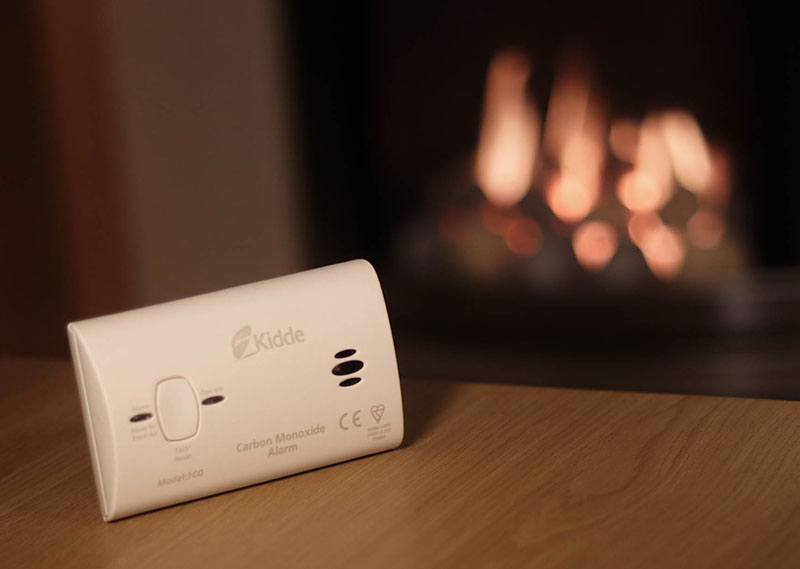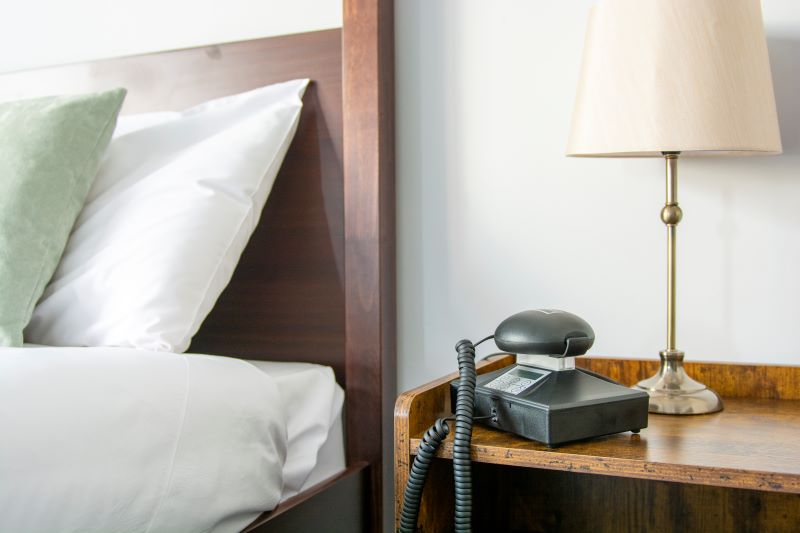Fire & Safety Solutions
CALL OUR TEAM NOW 0800 612 6537
Also FREE from UK mobiles
Free Delivery
on 100s of Products
Secure Payments
with our fast checkout
Online Support
Contact Us Now
30 Day Accounts
for Public Sector
5 Star Customer Feedback
Fire Safety for Holiday Lets
From the 1st October 2023, updates to the Fire Safety Order mean it is now a legal requirement for all businesses to record a fire risk assessment (FRA) and all fire safety arrangements in full. This applies regardless of the number of employees and size or type of business.

This guide has been written to help apply this new fire safety legislation specifically in small paying guest accommodation. However, it is your responsibility to ensure that you are compliant with the requirements set out in that legislation and to seek independent legal advice, if necessary.
This guidance is for single premises of ground floor, or ground and first floor, providing sleeping accommodation for a maximum of 10 persons, with no more than four bedrooms on the first floor, such as houses, cottages, and chalets. It also applies to individual flats (whether within a purpose-built block of flats or a house that has been converted into flats), other than unusually large flats (e.g. as often found in mansion blocks in London).
Also, the fire safety principles and recommendations can be applied to smaller types of outdoor accommodation which fall under the same duties such as holiday caravans, camping and glamping pods, bothies, lodges, shepherds’ huts, tents, tree houses and yurts. Although the fire risks associated with this type of accommodation are generally low, some units will have increased risks.
What are my responsibilities?
As the owner, you are known as the 'Responsible Person'. You must make sure that a fire risk assessment is carried out on your premises and findings are recorded and kept. You should have procedures in place to ensure that employees, guests and visitors know what to do in the event of a fire. You must also have a copy of this fire risk assessment on display within the property. We recommend having this in your welcome folder.
Can I do my own Fire Risk Assessment?
Yes, for small premises, preparation of a fire risk assessment can be completed, by following the simple steps set out in our free fire risk assessment form. If you choose to carry out the fire risk assessment, it is important that you feel able to interpret and apply the guidance and recommendations to your property. However, if you do not feel confident to do so, you should engage the services of a competent fire risk assessor.
What will I need to consider in the risk assessment?
You will not only need to consider the size and layout of your accommodation but also the people who are likely to be using the premises, including older people, very young children and those with physical, visual or auditory impairments and how they will escape in the event of a fire.
The fire risk assessment involves identifying potential fire hazards to ensure that there are measures to prevent fires starting and that there is fire safety equipment in place to keep employees, guests, contractors, and others safe from fire.
What fire risks could there be in the accommodation?
Electrical equipment – Electrical equipment and wiring are common causes of fire. You must make sure that your wiring has been checked by a qualified electrician. Electrical appliances should be regularly checked to ensure they remain in safe working condition. Wiring should be checked for any signs of damage to cables, cracked or loose sockets and these should be replaced when required. You should carry out a visual check that all appliances appear to be in good condition between lets.
Smoking – Smoking is a common cause of fire in domestic premises. You should have a defined policy on smoking, which should also cover the use of vaping and e-cigarettes. If you do not want to permit smoking in your premises, no smoking signs must be displayed. If you allow people to smoke in your premises, suitable provisions, such as safety ashtrays and bins, should be provided to minimise the risk.
Heating – Consider the risks that are associated with the type of heating in your accommodation. Heating and hot water systems should be subject to annual maintenance by a qualified contractor to ensure they are maintained and in good condition. Gas boilers must be checked and serviced annually by a Gas Safe registered engineer.

Carbon monoxide detectors should be provided where living accommodation contains a gas or solid fuel-burning appliance. Appropriate instructions should be provided to all guests and suitable procedures put in place if there is a problem including where the emergency gas switch is located. If you have open fires or log burners in your property you need to consider the following; a fire guard is provided, the chimney should be swept annually, metal ash bins should be provided and dry wood, kindling and firelighters should be stored at a safe distance.
Where no heating is provided, adequate warnings should be made NOT to bring portable heaters or BBQs inside as this could expose the guests to CO exposure
Cooking – Ensure cooking stoves and appliances are kept clean and maintained in a good condition, these should be serviced annually by a qualified engineer. Instructions for the safe use of appliances should be made available for guests. It is recommended that deep fat fryers should only be permitted if they are thermostatically controlled.
Candles – Candles and tea lights are a common cause of fires. You should not provide candles, tea lights or ethanol burners for use by guests, and a policy should be in place to prohibit their use. Torches, night lights or an Emergency Night Light & Torch should be provided, where appropriate for the accommodation, in bedrooms and at the top and bottom of stairways.
Housekeeping – Good housekeeping is important in reducing the risk of fire. Escape routes should be kept clear at all times. Look at the positioning of your furniture; could moving or reducing the amount of furniture, especially on the main escape routes, help occupants to reach safety safely?
Furniture and Furnishings – Furniture and furnishings provided in your premises should comply with the Furniture and Furnishings (Fire) (Safety) Regulations 1988 (as amended).
Dangerous substances – If you keep dangerous substances, such as flammable liquids or materials (e.g. petrol for lawnmowers), you will need to ensure that they are used and stored safely (ideally, outside the building in locked, metal bins) to reduce the risk of fire. Guests must either be restricted from using these or instructed on their safe use.
In blocks of flats, barbecues and patio heaters should not be used on external balconies. If barbecues, patio heaters or fire pits are used in gardens, they should be sited at a safe distance from the property.
Fire safety equipment for holiday lets
Recent guidance from the UK Government outlines recommendations to protect guests from the risk of fire in your holiday accommodation. You will need to look at ways to quickly alert the guests of danger and protect the escape route(s). Some fire safety equipment, such as smoke alarms, may already be in the property but you may need to upgrade them or replace to ensure they meet the required standard for the property.
Smoke Alarms – There are 3 main smoke detector types, optical, heat and multi-sensor(combined). The type of smoke alarm you fit will depend on which room the alarm is installed in, and the likely type of combustible material in these rooms. Alarms can be battery or mains powered, stand alone or wired / wirelessly interlinked (RF). Interlinked alarms offer the quickest warning of danger as once one alarm senses smoke then all the alarms in the series will sound, giving you vital extra time to evacuate the property.
Carbon Monoxide (CO) Alarms Carbon monoxide detectors should be provided where living accommodation contains a gas or solid fuel-burning appliance. They should be fitted 1 to 3 metres horizontally from potential sources of CO , such as fireplaces and boilers. Also consider providing CO alarms in living rooms and on bedside tables, to protect occupants where they spend the most time.

Fire Extinguishers – In the event of a fire, evacuating the premises is the safest thing to do and guests should not be expected to use firefighting equipment. In self-catering accommodation, although guests are not expected to use fire-fighting equipment, you may wish to provide a small multi-purpose fire extinguisher and/or fire blanket in the kitchen area. P50 service-free 10-year extinguishers are also available and, unlike traditional metal extinguishers, do not require an annual engineer visit at an additional expense.
Fire doors/Solid core doors – Fire doors are not always necessary; this is something that you would need to get verified by the fire risk assessor. In most instances, it should be possible to accept solid, conventional doors that are a good fit in their frames. This will typically comprise a 44mm thick door of solid timber or with a core comprising flaxboard or chipboard. In some cases, usually if your property is within a block of flats, the final exit door should be self-closing.
Exit doors, such as the front or back door, should always be easy to unlock and must not need a key to unlock them from the inside. A simple latch or thumb turn is usually good enough.
Emergency lighting – Normal light switches should be easy to find. You should think about whether, if a fire interrupts the electrical supply, any ‘borrowed lighting’ (e.g. from nearby street lighting) would be adequate to allow people to find their way out. If not, you can replace or enhance existing light fittings with emergency escape lights, which have internal batteries that power the light in the event of a mains failure.
It is also possible to obtain “night lights” that remain plugged into sockets and provide lighting when the normal lighting is switched off or fails, like the Auraglow Motion Sensor Night Light & Emergency Torch. Some models available allow the sockets to be used normally, by plugging electrical appliances into the night light.) If electrical sockets are located on escape routes, these can provide illumination of the escape route, but can also be removed from the socket for use as a torch.
Escape routes and signage – these should lead as directly to safety as possible. All escape routes should be kept clear of obstructions and consideration should be made to the guests that are staying in your property and if they require additional assistance to evacuate. Otherwise, your accommodation should be advertised in such a way that paying guests are aware of any limitations.
In simple premises, the escape routes and exits are likely to be obvious and in daily use and, as such, there will normally be no requirement to provide fire exit signs. However, you may need to provide some fire exit signage if exit routes are not obvious and exit doors are not commonly used.
Specialist equipment e.g. deafgard/strobes – You may wish to invest in specialist equipment for guests with hearing impairments, such as strobe lights or vibrating pads that go under their pillow if the smoke alarm is activated.

How often do I need to check my property?
Checks for damage to appliances and risks highlighted in your fire risk assessment should be checked regularly, especially in between lets. Any damaged appliances or wiring should be removed and/or replaced before a new let/guest is allowed to enter the property.
For the fire risk assessment, an annual review is usually appropriate, but you must also conduct a review following any significant change to the premises, or an incident such as a fire.
Further information
A guide to making your small paying-guest-accommodation safe from fire




















